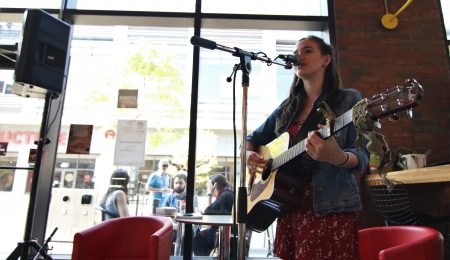iPolitics (CUP)—With a dismal voter turnout rate, young Canadians get stereotyped as being apathetic towards politics, but new research from Samara Canada busts that myth.
The report, released Sept. 9, found Canadians aged 18 to 29 were on average 11 per cent more likely than those 30 and older to be engaged in 18 different measures of civic and political participation, not including voting.
“It’s clear this generation cares a great deal about issues and their communities,” said Jane Hilderman, executive director of Samara Canada.
The findings come from Samara’s 2014 online Citizens’ Survey, which questioned approximately 2,400 Canadians about their political activity in the past year. These acts included signing a petition, volunteering for a charitable cause or working with others to solve a community problem.
But these high levels of engagement in both civic and political life haven’t translated into voting. In the 2011 federal election, only about 38 per cent of those aged 18 to 24, and roughly 45 per cent of those aged 25 to 34 voted. If this trend continues, it could spell trouble for the health of the country’s democracy, as there are roughly five million Canadians between the ages of 18 and 29.
There are multiple reasons why millennials don’t vote, but the report provides a few suggestions: the parties’ messages don’t resonate with young voters, parties don’t try to reach out to this demographic, or—due to young people being more transient—the parties’ messages are not received.
Limited time, staff, and funding means politicians put their energy into reaching out to people they know will vote for them. With low voter turnout rates among youth, getting their support is being sidestepped in favour of those who are older and more likely to show up on election day.
The research shows in the 12-month period leading up to an election, only 55 per cent of those aged 18 to 29 had been contacted by a political leader. Three quarters of people aged 56 and above said they had been contacted.
“That’s a gap of 20 percentage points. That’s pretty big,” says Hilderman.
This discrepancy is concerning, she says, because if it continues, young people won’t feel invited or encouraged to participate in the election.
Samara’s research indicates contact with politicians can reinforce one’s ties to politics. Of those young voters who were contacted, 61 per cent said that elected officials decisions impacted their daily lives. For those who didn’t experience outreach, only 22 per cent held the same view.
However, since parties are trying to get every vote they can, connecting with millennials can pay off on election day. According to the National Youth Survey of 2011, those who were contacted by a political leader were 15 per cent more likely to vote.
Getting millennials—and everyone else—out and voting is important. Both for the political process, and for the health of the nation, says Hilderman. “Young people are going to be living with the legacy of the decisions that our political leaders are making today.”
With the election becoming a tight race, she says campaigns might have to think creatively on how they are going to win. It’s an opportunity for the parties to court the under-30 vote.
“Being able to tap into a new source of support could be the difference in winning or losing this election.”



